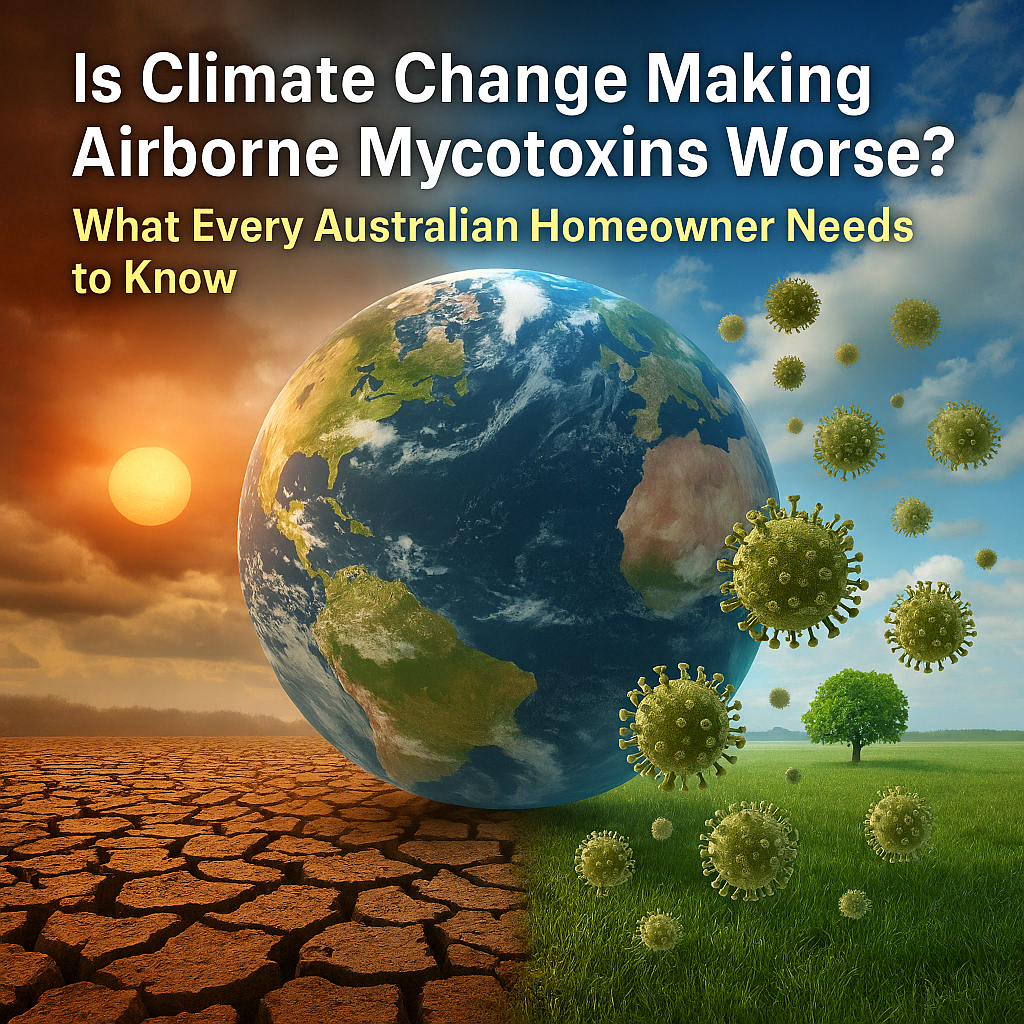
Is Your Home at Risk of Mould and Airborne Mycotoxins? How to Protect It
Mould and airborne mycotoxins pose serious risks to indoor air quality and overall health. These microscopic toxins, released by certain moulds, can linger in the air, leading to respiratory issues, allergies, and long-term health problems.
Without proper prevention and remediation, mould infestations can spread quickly, making homes unsafe to live in. The Mould Group are experts in detecting, removing, and preventing airborne mycotoxin contamination to ensure a safe indoor environment.
What Are Airborne Mycotoxins and Why Are They Dangerous?
Airborne mycotoxins are toxic by-products produced by moulds such as Aspergillus, Penicillium, and Stachybotrys (black mould). Unlike mould spores, mycotoxins are not living organisms but chemical compounds that can remain airborne for extended periods.
These toxins attach to dust particles, making them easy to inhale. Once inside the body, they can trigger inflammatory responses, compromise immune function, and cause neurological symptoms.
How Can Airborne Mycotoxins Affect Your Health?
Exposure to airborne mycotoxins can cause a range of symptoms, from mild irritation to severe health conditions. Common symptoms include:
- Chronic headaches and dizziness
- Respiratory distress, such as wheezing or shortness of breath
- Fatigue and difficulty concentrating
- Skin irritation and sinus congestion
Prolonged exposure can lead to immune suppression, lung infections, and cognitive impairment. People with asthma, allergies, or weakened immune systems are at greater risk.
What Causes Mould to Release Mycotoxins into the Air?
Mould releases mycotoxins when it is stressed by environmental factors. The main contributors to airborne contamination include:
- Excess moisture from leaks, floods, or condensation
- Poor ventilation leading to stagnant, humid air
- High indoor humidity (above 60%)
- Organic material, such as wood, drywall, and carpeting, that supports mould growth
These conditions allow mould to thrive, increasing the likelihood of airborne mycotoxins contaminating indoor spaces.
How Can You Test for Airborne Mycotoxins in Your Home?
Testing is the only way to confirm the presence of airborne mycotoxins. The Mould Group provides professional testing services using advanced methods, including:
- Air sampling to detect invisible toxins
- Surface testing to find hidden contamination
- Spore trap analysis to identify mould species
Even if no visible mould is present, mycotoxins can still be circulating in your indoor air. Regular testing is essential for homes with past water damage or persistent dampness.
What Are the Best Ways to Remove Airborne Mycotoxins?
Effective remediation requires eliminating both the source of mould and the airborne toxins it produces. Recommended methods include:
- HEPA air filtration systems to capture airborne mycotoxins
- Dehumidifiers to maintain optimal indoor humidity levels
- Professional mould remediation to remove contaminated materials safely
Attempting to clean mould without proper techniques can spread mycotoxins further, making professional remediation the safest option.
How Can You Prevent Mycotoxin Contamination?
Prevention is key to maintaining a mould-free environment. The most effective strategies include:
- Controlling moisture by fixing leaks and using dehumidifiers
- Improving ventilation in bathrooms, kitchens, and basements
- Regularly inspecting HVAC systems for mould buildup
Using mould-resistant paints and materials in high-risk areas can also reduce the likelihood of future contamination.
Who Is Most at Risk from Airborne Mycotoxins?
Certain groups are more vulnerable to mycotoxin exposure, including:
- Children and the elderly, whose immune systems are more sensitive
- Individuals with asthma or respiratory conditions, who may experience worsened symptoms
- People with compromised immune systems, including those undergoing medical treatments
For at-risk individuals, proactive testing and prevention are essential to maintaining good health.
As We Discussed in Testing for Airborne Mycotoxins: Why It’s Critical, How Can Testing Help?
As we discussed in Testing for Airborne Mycotoxins: Why It’s Critical, professional testing is the first step in identifying contamination and taking action. Even low levels of exposure can have significant health effects over time.
If you suspect your home or workplace may be affected, scheduling a professional assessment is essential.
What’s Next? The Dangers of Airborne Mycotoxins in Canberra
Airborne mycotoxins are a growing concern, particularly in regions with high humidity and frequent weather changes. Our next blog will dive deeper into The Dangers of Airborne Mycotoxins in Canberra, explaining why this issue is more severe in certain locations.
Call-to-Action (No Traditional Conclusion)
If you suspect mould or airborne mycotoxins in your home, don’t wait. Contact The Mould Group today for expert testing and remediation.
📝 Next blog in this series: The Dangers of Airborne Mycotoxins in Canberra
Meta Description (160 Characters for SEO)
“Protect your home from mould and airborne mycotoxins. Learn how to test, remove, and prevent exposure with expert advice from The Mould Group.”
Social Media Captions (Optimized for Engagement)
📌 Facebook Post:
“Mould and airborne mycotoxins can pose serious health risks. Learn how to protect your home and improve indoor air quality. #MouldPrevention #AirQuality”
📌 Google Business Profile Post:
“Worried about mould in your home? Airborne mycotoxins can affect your health. Find out how to test, remove, and prevent contamination. #MouldRemediation #IndoorAirQuality”
Recent Post
Emerging Research
Are Airborne Aflatoxins More Dangerous Than We Thought? Emerging Research Reveals the Unknowns Introduction Mould is not just a cosmetic nuisance. It’s a living organism that, when left unchecked, releases toxic by-products into your environment. One of the most concerning of these by-products is aflatoxin—a dangerous type of airborne mycotoxin. While we know that ingesting […]
Climate Change and Airborne Mycotoxins
Is Climate Change Making Airborne Mycotoxins Worse? What Every Australian Homeowner Needs to Know Introduction Mould is more than just an unsightly problem—it’s a biological hazard that can compromise your health and damage your property. As it grows, it can release dangerous toxins into the air called mycotoxins. When these mycotoxins become airborne, they can […]
Airborne Aflatoxins and Animals
Are Your Pets or Livestock at Risk? Understanding Airborne Aflatoxins and Animals Introduction Mould is not just a concern for homes and people—it also poses a serious threat to animals. When mould spreads in barns, sheds, feed storage areas, or even inside homes, it can release aflatoxins—a dangerous type of airborne mycotoxin. These toxins can […]




